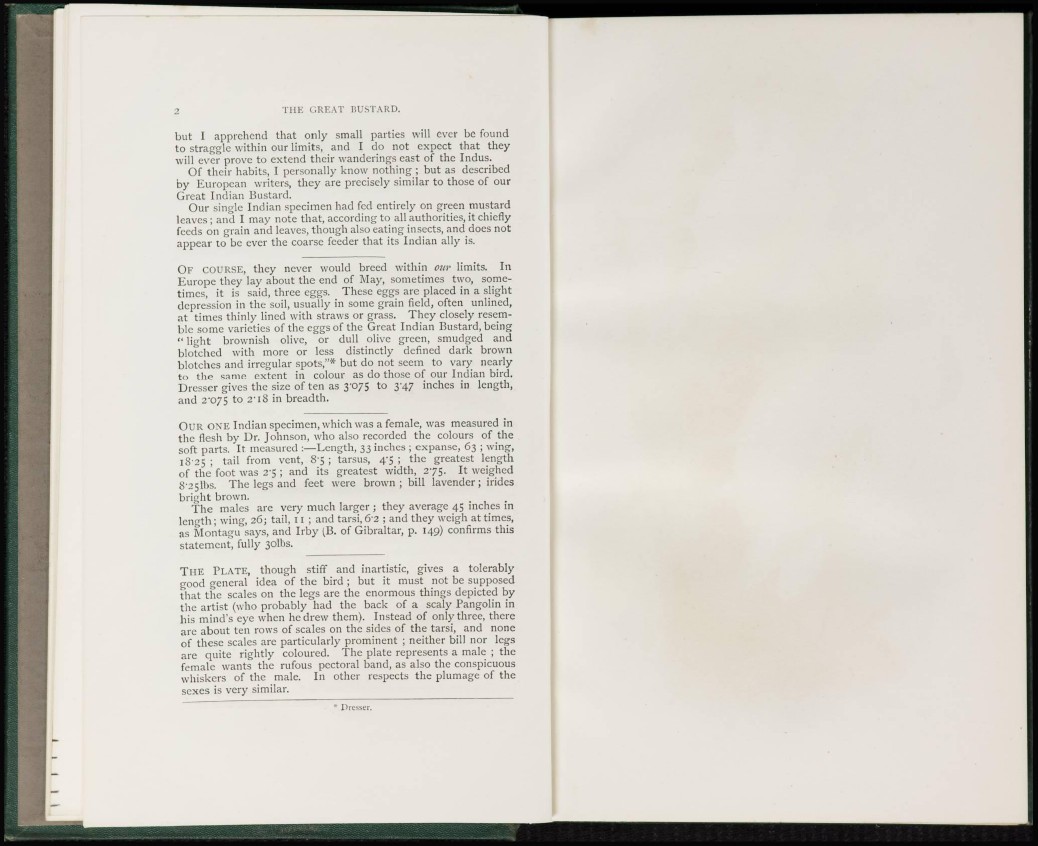
2 THE GREAT BUSTARD.
but I apprehend that only small parties will ever be found
to straggle within our limits, and I do not expect that they
will ever prove to extend their wanderings east of the Indus.
Of their habits, I personally know nothing ; but as described
by European writers, they are precisely similar to those of our
Great Indian Bustard.
Our single Indian specimen had fed entirely on green mustard
leaves; and I may note that, according to all authorities, it chiefly
feeds on grain and leaves, though also eating insects, and does not
appear to be ever the coarse feeder that its Indian ally is.
Or COURSE, they never would breed within our limits. In
Europe they lay about the end of May, sometimes two, sometimes,
it is said, three eggs. These eggs are placed in a slight
depression in the soil, usually in some grain field, often unlincd,
at times thinly lined with straws or grass. They closely resemble
some varieties of the eggs of the Great Indian Bustard, being
" light brownish olive, or dull olive green, smudged and
blotched with more or less distinctly defined dark brown
blotches and irregular spots,"* but do not seem to vary nearly
to the same extent in colour as do those of our Indian bird.
Dresser gives the size of ten as 3'075 to 3-47 inches in length,
and 2-075 to 2-iS in breadth.
OUR ONE Indian specimen, which was a female, was measured in
the flesh by Dr. Johnson, who also recorded the colours of the
soft parts. It measured :—Length, 33 inches ; expanse, 63 ; wing,
1825 ; tail from vent, 8'5 ; tarsus, 4-5 ; the greatest length
of the foot was 2-5 ; and its greatest width, 275. It weighed
8'25lbs. The legs and feet were brown; bill lavender; irides
bright brown.
The males are very much larger ; they average 45 inches in
length; wing, 26; tail, 11 ; and tarsi, 6'2 ; and they weigh at times,
as Montagu says, and Irby (B. of Gibraltar, p. 149) confirms this
statement, fully 30lbs.
T H E PLATE, though stiff and inartistic, gives a tolerably
good general idea of the bird ; but it must not be supposed
that the scales on the legs are the enormous things depicted by
the artist (who probably had the back of a scaly Pangolin in
his mind's eye when he drew them). Instead of only three, there
are about ten rows of scales on the sides of the tarsi, and none
of these scales are particularly prominent ; neither bill nor legs
are quite rightly coloured. The plate represents a male ; the
female wants the rufous pectoral band, as also the conspicuous
whiskers of the male. In other respects the plumage of the
sexes is very similar.